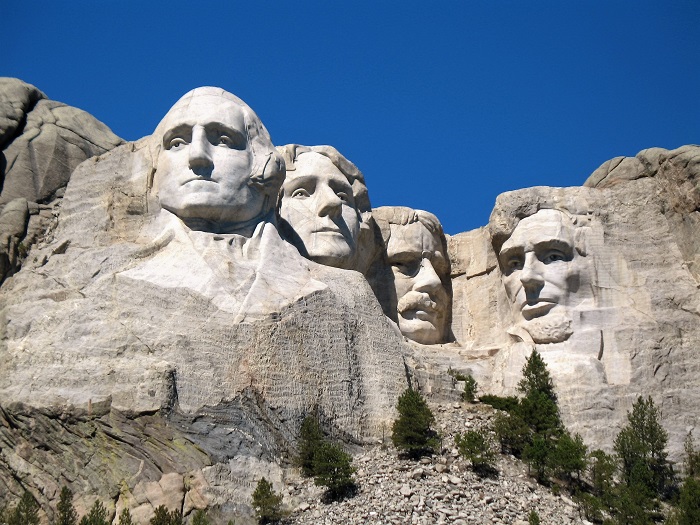ISABEL RUBIO ARROYO | Tungsteno
A head 18.3 metres high and a nose 6.4 metres long: these are the stratospheric measurements of George Washington's head on Mount Rushmore. Next to him are situated the heads of Thomas Jefferson, Theodore Roosevelt and Abraham Lincoln, towering over the beauty of the Black Hills of South Dakota.
Their dimensions would also leave some jaws agape: each of their eyes is approximately 3.4 metres wide and each mouth is about 5.5 metres across. We investigate the story behind this iconic American landmark.
Obstacles to sculpting US history
The idea to carve this iconic sculpture in the Black Hills dates back to 1923. It was suggested by South Dakotan State Historian Doane Robinson, who contacted sculptor Gutzon Borglum. The American artist decided to carve the faces of these four presidents because he felt that they represented the most important events in the history of the United States.
The project faced a number of challenges in its early days, including getting permission to carve into the mountain and acquiring sufficient funding. "For those involved, keeping the project moving forward often seemed more difficult than the actual work of carving the granite into a colossal sculpture of the four presidents," says the US National Park Service (NPS) website.
Lincoln Borglum, son of Gutzon Borglum, next to a plaster scale model of the monument. Credit: Charles D'Emery / NPS
Dynamite shaped the presidential faces
The creation of this iconic monument began on 4 October 1927 with the explosive power of dynamite, followed by meticulous carving by hand to bring the busts to life. This monumental project took 14 years to complete and involved the dedication and effort of nearly 400 workers. "The duties involved varied greatly from the call boy to drillers to the blacksmith to the housekeepers," the NPS notes.
The workers faced extreme conditions: from searing heat to bitter cold and high winds. Each day they climbed 700 steps to the top of the mountain to punch in, and then descended the wall face in a "bosun chair" supported by steel cables. The work was "exciting but dangerous," says the NPS, which notes that 90% of the rock was carved using dynamite.
Explosives were used until only three to six inches of rock remained to be removed and the final carving surface reached. At this point, drillers and assistant carvers drilled closely-packed holes into the granite in a process called "honeycombing". This weakened the rock so that it could often be removed by hand. Workers would then smooth the surface of the faces using hand tools, creating a final rock surface as smooth as a sidewalk.
Workers suspended to carve the faces of Mount Rushmore. Credit: Charles D'Emery / NPS
A hidden chamber carved into the mountain
Little did the workers know at the time that they were building a monument that would go down in history. With Borglum’s death in early 1941 and the Second World War looming on the horizon, the US Congress cut off funding for the project and all work on the memorial was halted on 31 October 1941. Over time, the sculpture has become a great icon of American history.
Today, more than two million people visit it each year, according to the NPS. Many may not know that hidden behind the giant stone heads is a chamber carved into the rock of the mountain, known as the Hall of Records, which is inaccessible to tourists.
Mount Rushmore hides a chamber carved into the mountain's stone behind Lincoln’s hairline. Credit: Business Insider
Inside the repository is a teakwood box that houses a titanium vault, covered by a granite capstone, on which the following quote from Borglum is etched: "...let us place there, carved high, as close to heaven as we can, the words of our leaders, their faces, to show posterity what manner of men they were. Then breathe a prayer that these records will endure until the wind and rain alone shall wear them away."
Tungsteno is a journalism laboratory to scan the essence of innovation.
